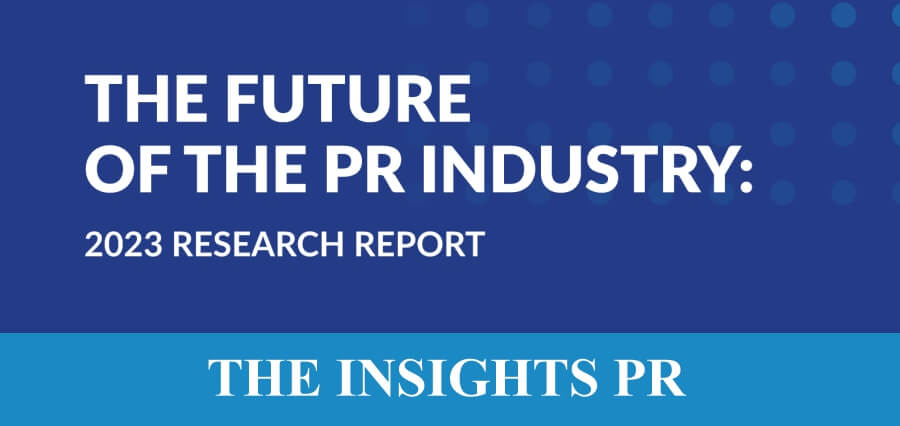Public relations (PR) is an ever-evolving field that adapts to the changing media landscape and consumer behavior. As technology advances and communication channels multiply, the future of PR is marked by exciting trends and innovative strategies. In this article, we will explore the emerging trends and innovations that are shaping the future of PR.
Data-driven PR:
In the digital age, data plays a crucial role in PR strategies. PR professionals are increasingly leveraging data analytics to measure the impact of their efforts, identify audience preferences, and make data-informed decisions. By analyzing data from social media, website traffic, and other sources, PR practitioners can optimize campaigns, target specific demographics, and refine messaging for better results.
Artificial Intelligence (AI) and Automation:
AI and automation are revolutionizing the PR industry. Chatbots and virtual assistants handle routine customer inquiries, freeing up PR professionals to focus on more strategic tasks. AI-powered tools analyze vast amounts of data, identify patterns, and generate actionable insights. Automated media monitoring systems enable PR practitioners to track brand mentions, sentiment analysis, and media coverage more efficiently, allowing for real-time engagement and crisis management.
Influencer Relations and Micro-influencers:
Influencer marketing continues to be a powerful PR tool. However, the focus is shifting from macro-influencers with massive followings to micro-influencers who have smaller but highly engaged audiences. Micro-influencers are identified as more authentic and relatable, leading to higher engagement rates. PR professionals are building long-term relationships with micro-influencers, co-creating content, and leveraging their niche expertise to reach specific target audiences.
Virtual Reality (VR) and Augmented Reality (AR):
VR and AR technologies offer immersive and interactive experiences that can transform PR campaigns. PR professionals can create virtual press conferences, product demonstrations, or virtual tours, allowing journalists and customers to engage with brands in a more engaging and memorable way. AR can enhance PR events and activations by overlaying digital elements onto the physical world, creating unique experiences and increasing brand visibility.
Purpose-driven PR:
In the future, PR strategies will increasingly focus on purpose-driven initiatives and corporate social responsibility (CSR). Consumers expect brands to take an attitude on social and environmental issues. PR professionals are aligning their efforts with meaningful causes, promoting sustainability, diversity, and ethical practices. Purpose-driven PR campaigns build trust, enhance brand reputation, and foster deeper connections with socially conscious consumers.
Employee Advocacy:
Employee advocacy is gaining prominence as organizations recognize the power of their employees as brand ambassadors. PR professionals are encouraging employees to share brand-related content on their personal social media channels, participate in industry discussions, and contribute to thought leadership. By amplifying employee voices, organizations can enhance their online presence, increase credibility, and foster a sense of authenticity.
Voice Search and Voice-Activated Devices:
With the rise of voice-activated devices like smart speakers and virtual assistants, PR professionals are adapting their strategies to optimize for voice search. Voice search optimization involves tailoring content to match the conversational and natural language patterns used in voice queries. PR practitioners are also exploring opportunities to deliver branded content through voice-activated devices, creating audio experiences and leveraging voice-activated skills.
Crisis Management in the Digital Age:
The digital age has transformed the landscape of crisis management. PR professionals are utilizing social listening tools and real-time monitoring to detect potential crises and respond swiftly. Effective crisis communication involves transparent and proactive messaging across multiple digital platforms. The future of crisis management will involve leveraging AI and sentiment analysis to identify emerging issues, manage reputational risks, and mitigate the impact of crises.
Brand Journalism and Owned Media:
PR professionals are increasingly embracing brand journalism as a way to tell compelling stories and control the narrative. By creating high-quality, journalistic-style content, organizations can become trusted sources of information in their respective industries. Owned media, such as brand blogs and online publications, provide platforms for sharing valuable insights, thought leadership, and industry news directly with audiences.
Personalized and Interactive Content:
As consumers seek personalized experiences, PR professionals are incorporating interactive content formats into their strategies. Interactive infographics, quizzes, surveys, and personalized videos engage audiences and encourage participation. By tailoring content to individual preferences, PR practitioners can create memorable brand experiences and drive meaningful engagement.
Virtual Events and Hybrid Experiences:
Virtual events gained significant traction during the COVID-19 pandemic and are expected to continue shaping the future of PR. Brands are exploring hybrid event models that combine virtual and in-person experiences, allowing them to reach broader audiences while maximizing engagement and participation. Virtual conferences, webinars, and live-streaming events provide opportunities for PR professionals to connect with their target audiences globally and create impactful brand experiences.



